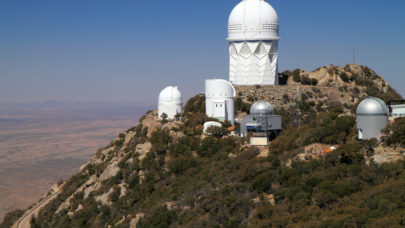
Penn State Supercomputing Tackles Jazz Improvisation
March 8, 2022
Love it or hate it, improv — though it may appear random — is often more purposeful and patterned than it may seem. And, improbable as it may seem, supercom Read more…

Penn State’s Exoplanet Hunt Boosted by Supercomputing
November 12, 2021
This year, Penn State launched the NEID (NN-explore Exoplanet Investigations with Doppler spectroscopy) astronomical spectrograph, part of a collaboration betwe Read more…

Roar Supercomputer to Support Naval Aircraft Research
January 14, 2021
One might not think “aircraft” when picturing the U.S. Navy, but the military branch actually has thousands of aircraft currently in service – and now, su Read more…

HPC Simulations Support Design of Implantable Sensor for Patients
November 11, 2020
Doctors use a variety of sensors to monitor a host of bodily functions and metrics that inform patient health, particularly surrounding intensive medical procedures. Nitric oxide (NO) and nitrogen dioxide (NO2) levels are two such metrics, with the former (produced by the human body) relaxing... Read more…

Quantum Machine Learning: A New Weapon Against COVID-19?
May 6, 2020
Months into the COVID-19 pandemic, supercomputers crunching the coronavirus is the norm, not the exception. Most of these systems are focused on various element Read more…

- Click Here for More Headlines

Whitepaper
Transforming Industrial and Automotive Manufacturing
In this era, expansion in digital infrastructure capacity is inevitable. Parallel to this, climate change consciousness is also rising, making sustainability a mandatory part of the organization’s functioning. As computing workloads such as AI and HPC continue to surge, so does the energy consumption, posing environmental woes. IT departments within organizations have a crucial role in combating this challenge. They can significantly drive sustainable practices by influencing newer technologies and process adoption that aid in mitigating the effects of climate change.
While buying more sustainable IT solutions is an option, partnering with IT solutions providers, such and Lenovo and Intel, who are committed to sustainability and aiding customers in executing sustainability strategies is likely to be more impactful.
Learn how Lenovo and Intel, through their partnership, are strongly positioned to address this need with their innovations driving energy efficiency and environmental stewardship.
Download Now
Sponsored by Lenovo
Whitepaper
How Direct Liquid Cooling Improves Data Center Energy Efficiency
Data centers are experiencing increasing power consumption, space constraints and cooling demands due to the unprecedented computing power required by today’s chips and servers. HVAC cooling systems consume approximately 40% of a data center’s electricity. These systems traditionally use air conditioning, air handling and fans to cool the data center facility and IT equipment, ultimately resulting in high energy consumption and high carbon emissions. Data centers are moving to direct liquid cooled (DLC) systems to improve cooling efficiency thus lowering their PUE, operating expenses (OPEX) and carbon footprint.
This paper describes how CoolIT Systems (CoolIT) meets the need for improved energy efficiency in data centers and includes case studies that show how CoolIT’s DLC solutions improve energy efficiency, increase rack density, lower OPEX, and enable sustainability programs. CoolIT is the global market and innovation leader in scalable DLC solutions for the world’s most demanding computing environments. CoolIT’s end-to-end solutions meet the rising demand in cooling and the rising demand for energy efficiency.
Download Now
Sponsored by CoolIT
Advanced Scale Career Development & Workforce Enhancement Center
Featured Advanced Scale Jobs:
HPCwire Resource Library
HPCwire Product Showcase
© 2024 HPCwire. All Rights Reserved. A Tabor Communications Publication
HPCwire is a registered trademark of Tabor Communications, Inc. Use of this site is governed by our Terms of Use and Privacy Policy.
Reproduction in whole or in part in any form or medium without express written permission of Tabor Communications, Inc. is prohibited.
























